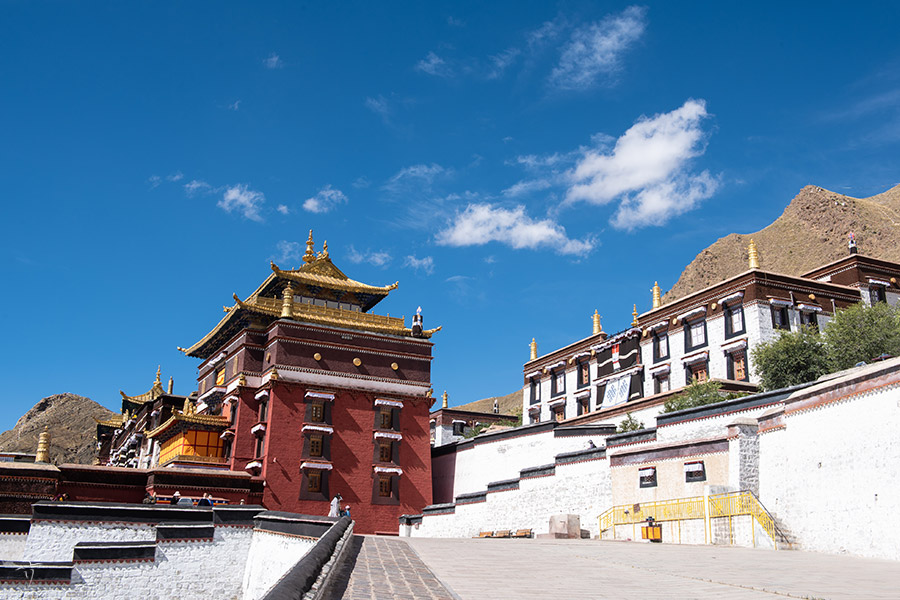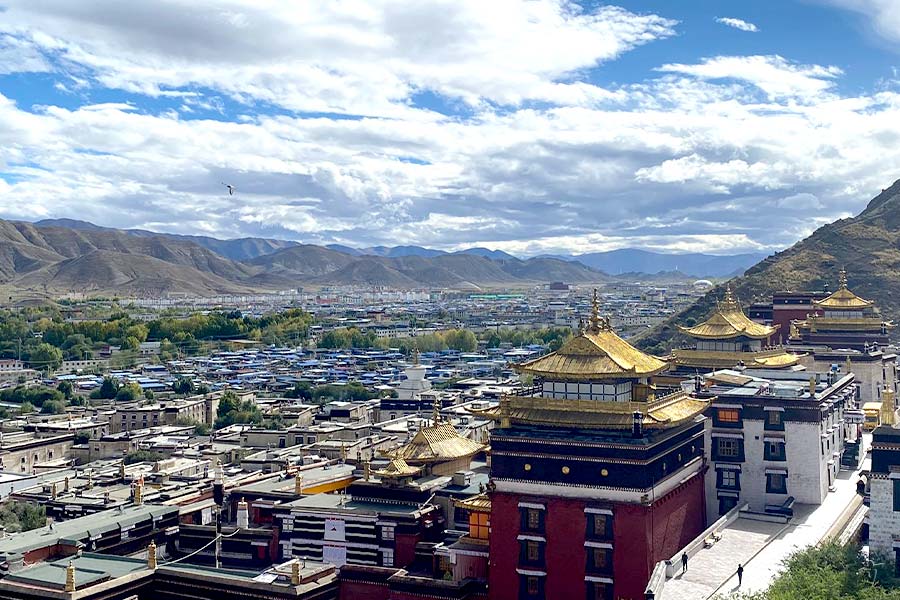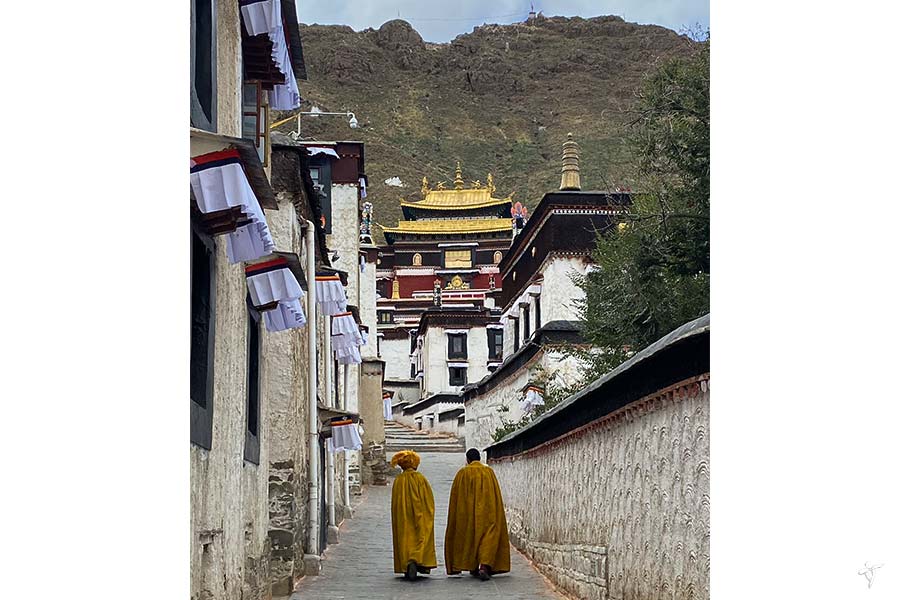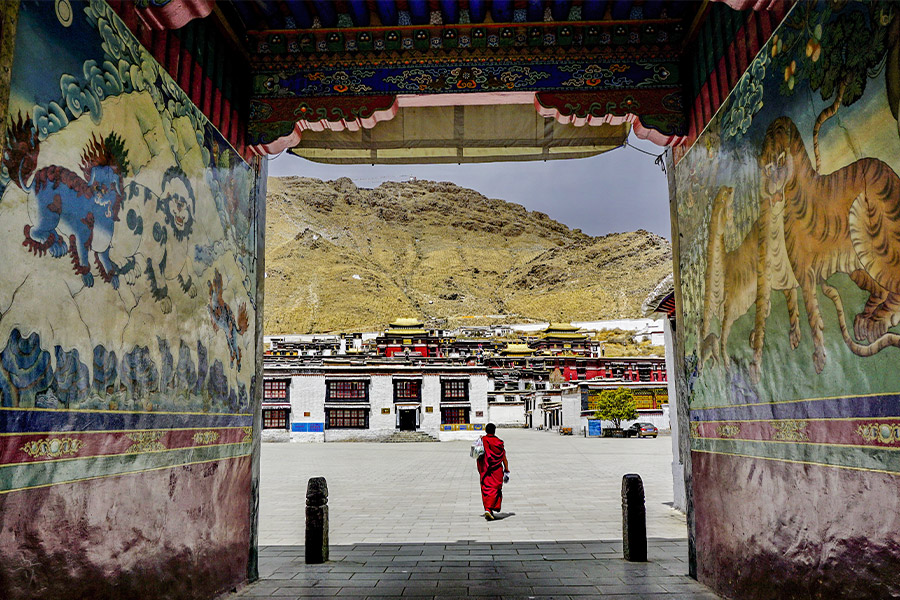Tashilhunpo Monastery

Chinese name: 扎什伦布寺 (Za Shi Lun Bu Si)
Location: at the hillside of Drolmari Mountain (尼色日山), west of Shigatse, Tibet.
Opening hours: 09:00-17:00 (The Buddha Halls are closed between 12:00 and 14:00)
Price: CNY55
Recommended time for a visit: about 3 hours
How to get there: The way for foreign travelers to enter Tibet is booking a Tibet tour or a China tour containing Tibet with a Chinese travel agent in advance.
Tips: Photos are restricted in the monastery especially for cultural relics; It is polite and respectable to secure an agreement before taking photos.
Introduction to Tashi Lhunpo Monastery
As its full name implies in Tibetan language, Tashilhunpo Monastery is the Heap of Glory or "the place all fortune and happiness gathered". The resplendent and magnificent Tashi Lhunpo Monastery is one of the Six Large Monasteries of Gelugpa (also known as Yellow Hat Sect) in Tibet, which is under the state protection. It was built in 1447 of Ming Dynasty (1368-1644) after 12 years' construction, by the disciple as well as the nephew (Gendun Drup, the first Dalai lama) of the famous Buddhist philosopher Tsongkhapa, the founder of Gelugpa. The monastery is the traditional seat of successive Panchen Lama (the most important Buddhist position just second to Dalai Lama) since the fourth Panchen took charge in the monastery. Covering an area of 300 000 square meters at present, it was so expanded by each Lama. It is said that the monastery was home to over 4000 monks and 4 tantric colleges in its heyday. Parts of the Tashi Lhunpo was opened to the public since the early 1980’s and the brilliant golden roofs of halls of this grand monastery can be caught in the roads far away from Shigates.

What to see in Tashi Lhunpo Monastery?
The first impression of the monastery to visitors is always its grand brown buildings with golden roofs and white walls. The main buildings inside should be the Maitreya Chapel, the Panchen Lama's Palace and the Kelsang Temple. The remarkable Thangka Wall in the right front was built by the first Dalai lama in 1468 and displays the humongous Buddhist Tangkas, the unique Tibetan paintings during the key Tibetan festivals. Most of them are images of Buddha.

The Maitreya Temple
It is the tallest building in the west of the monastery with a height of 30m, enshrining a gigantic sitting Maitreya Buddha on a splendid lotus throne with its hands in the symbolic teaching pose. The statue was erected in 1914 by the ninth Panchen Lama. It should be the largest sitting Buddha in the world, which is 26.2m high and weights in 335kg of gold and 115700kg of copper with over 1400 pearls and precious stones. Visitors can have a closer view on each part of this artwork at each of the five storeys in the hall.
The Panchen Lama's Palace and Stupa Hall
The old living area of Panchen Lama is on the east side, with a narrow courtyard lead to the temple within the tomb of the Fourth Panchen Lama. On both ends of the vestibule are large inscriptions, and stupa tomb of silver and gold are just splendor for inlaid jewels and craftsmanship.

The 7 stupa towers were built in diverse sizes, each of them adorned with pearls and jades with butter-oil lambs that burning all the year around. In these towers are the Buddhist relics of Panchen Lamas. The one serve the Fourth Panchen Lama is the most luxurious, which was built in 1662 and measures in 11 meters with gold-silver base, silver body with jewels.
Main Chanting Hall
Also called Cuoqin Grand Hall. It is the oldest building in the monastery with a 500-square-meter sermon field which can hold over 2000 people at a time. The hall enshrines a Sakyamuni and his eldest disciple, engraves in the founder and the Fourth Panchen Lama on columns on both sides, and positions over 80 statues of eminent monks in all four corners.
In addition, the monastery also houses multiple valuable cultural relics, including the most precious one, the grand portrait of Emperor Qianlong (1735-1795) of Qing Dynasty (1636-1911), as well as kinds of rare potteries of past dynasties, silk and brocade scrolls for Buddhism, jades, crystals, copper Buddhas of Ming Dynasty and sorts of art pieces.
Quick Questions
Our team is waiting for your questions. Please feel free to ask us any questions you might have about our China package tours, Chinese culture, or the sites available. We will gladly help you with any special needs you might have and all questions, like our trip designing is completely free of charge.




